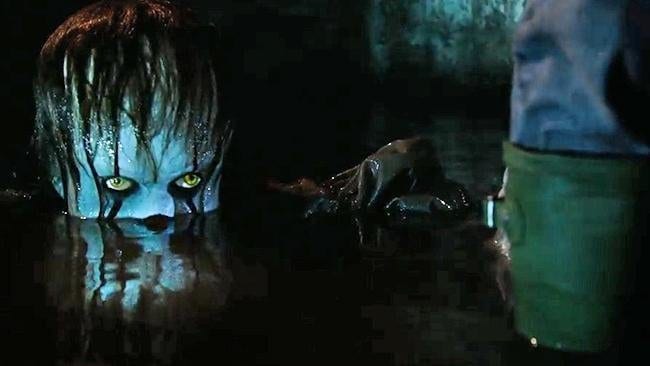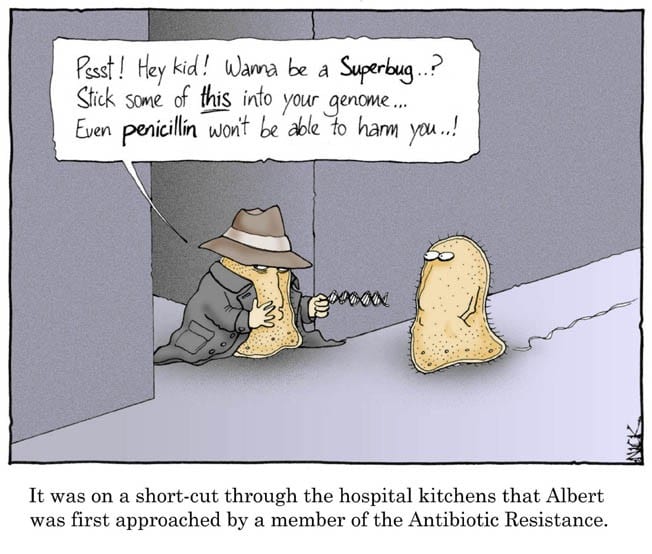When Halloween excitement is at its highest, my conversations are dominated by comparing terrifying foes (IT vs. Freddy Krueger), and generating ridiculous ‘what if' scenarios, such as, “If Pennywise was around the corner, what would you do?” But as the frights of Halloween season wind down, and we gear up for the inevitable runny noses of winter, my thoughts switch to different terrifying foes: pathogens.

Due to immense genetic variation between pathogens, even the microscopic can be as scary as the ‘moonlight man‘ or Chucky. But what villain comes out on top? Who is the scariest pathogen around? You might think of Ebola, rabies, or malaria, and for good reasons.
Ebola kills ~ 50% of the people it infects. If not treated fast enough, rabies can drive a person or animal insane, eventually leading to a terrifying death. Malaria packs an unexpected punch considering its tiny delivery system (the mosquito), and horrendous effects that devastate millions worldwide. These pathogens would top any reasonable list of the scariest pathogens – but not mine.
My pathogen is the unexpected bad guy (i.e Chancellor Palpatine from Star Wars or Loki from the Marvel universe) lurking in the shadows waiting for the perfect time to attack.
The ESKAPE pathogens are that bad guy. They cover our bodies, hospitals, and wait until we're vulnerable before attacking. Scarier still, the ESKAPE pathogens are resistant to most antibiotics.

ESKAPE is an acronym that stands for the six bacteria known for ‘escaping' death by antibiotics:
These common pathogens cause a range of illnesses from urinary tract infections (E.faecium) to MRSA (methicillin-resistant Staphylococcus aureus) skin infections. These bacteria are normally found on our skin, intestines, and stool; but if they enter our bloodstream or lungs they can wreak havoc by causing pneumonia, sepsis, meningitis, or other infections! These bugs can cause serious, life-threatening illnesses- especially for those who are immunocompromised.
These six bacterial pathogens are the leading causes of hospital-acquired infections in the world. Hospital-acquired infections are illnesses a patient contracts ~ 48 hours after hospital admission that were not present before they walked through the doors. Sneaky little pathogens! In fact, hospital-acquired infections are fairly common, affecting 1 in 10 patients. Antibiotics usually work to fight these villains, unless you're infected with one of the little devils with antibiotic resistant features.
Antibiotic resistance is a horrifying problem, as described in Tina’s blog post. The ESKAPE pathogens are resistant to drugs typically used by physicians to fight against them, so there's unfortunately not much they can do because the bugs have “escaped†damage from our current pharmaceutical arsenal.
But, how do they do it? How do these ESKAPE pathogens wreak such havoc? In some movies like “IT†the main villain, Pennywise, lures kids into sewers, whereas in the classic horror film “Nightmare on Elm Street†the villain, Freddy Krueger, kills in dreams. Each villain has their own method to attack at just the right time, the ESKAPE pathogens are no different!

The ESKAPE pathogens have intricate complexities in how they're able to overcome drug treatments. Penicillin, an antibiotic, normally hijack the bacteria's ability to generate their cell walls, which hold the bacteria together. But, penicillin has no chance with our villain! The ESKAPE pathogens produce enzymes that circumvent this process! Additionally, some of these bacteria generate a biofilm, which acts as a ‘shield' that prevents the antibiotics from being able to effectively fight the bacteria.
Current studies continue to determine the mechanisms that ESKAPE pathogens use to overcome antibiotics, but sadly the story is incomplete- we have no new antibiotics as of yet. Until we discover a new pathogen-fighting superhero, preferably one that is resistance-proof, these pathogens will continue to attack.

Although an ESKAPE pathogens horror flick won't be in theaters near you any time soon, the potential monsters hiding in our hospitals, inside our bodies, and on our skin with increasingly less therapeutic options chills my blood cold.
 Kara Wyatt is a PhD student in the Department of Infectious Diseases at the University of Georgia currently studying the immune response to influenza within the lung epithelium. In her spare time she enjoys playing video games, hiking with her husband, or watching Kind of the Hill on repeat. You can connect with Kara by email at kara.wyatt@uga.edu. More from Kara Wyatt.
Kara Wyatt is a PhD student in the Department of Infectious Diseases at the University of Georgia currently studying the immune response to influenza within the lung epithelium. In her spare time she enjoys playing video games, hiking with her husband, or watching Kind of the Hill on repeat. You can connect with Kara by email at kara.wyatt@uga.edu. More from Kara Wyatt.
About the Author
-
athenssciencecafehttps://athensscienceobserver.com/author/athenssciencecafe/April 17, 2020
-
athenssciencecafehttps://athensscienceobserver.com/author/athenssciencecafe/April 12, 2020
-
athenssciencecafehttps://athensscienceobserver.com/author/athenssciencecafe/April 3, 2020
-
athenssciencecafehttps://athensscienceobserver.com/author/athenssciencecafe/March 30, 2020







